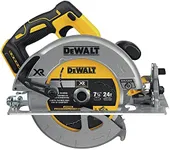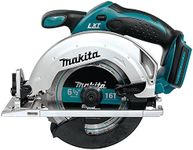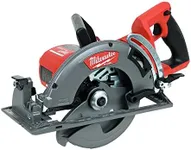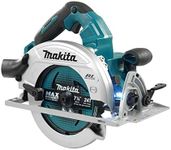Buying Guide for the Best Cordless Circular Saws
Choosing the right cordless circular saw can make your woodworking or DIY projects much easier and more enjoyable. The key is to match the saw’s features to the types of tasks you plan to tackle. Think about what materials you’ll be cutting, how often you’ll use the saw, and whether you need portability or extra power. Understanding the main specifications will help you make a confident and informed decision.Blade SizeBlade size refers to the diameter of the circular saw blade, and it determines how deep the saw can cut in a single pass. Common sizes range from 5-1/2 inches to 7-1/4 inches. Smaller blades are lighter and easier to handle, making them suitable for lighter tasks and tight spaces, while larger blades can cut through thicker materials and are better for heavy-duty work. If you mostly work with thin boards or need a compact tool, a smaller blade may be ideal. For general construction or cutting thicker lumber, a larger blade is more versatile.
Battery VoltageBattery voltage indicates the power output of the saw. Most cordless circular saws use batteries ranging from 12V to 60V. Lower voltages (12V-18V) are lighter and suitable for light-duty tasks, while higher voltages (20V-60V) provide more power for tougher jobs and longer cuts. If you plan to cut dense materials or use the saw frequently, a higher voltage will help you work more efficiently. For occasional or lighter use, a lower voltage saw will be easier to handle and still get the job done.
No-Load Speed (RPM)No-load speed, measured in revolutions per minute (RPM), tells you how fast the blade spins when the saw is not cutting anything. Higher RPMs generally mean smoother and faster cuts, especially in softer materials. Saws with lower RPMs may be better for controlled, precise cuts or for cutting harder materials. If you need to make quick, clean cuts in wood or similar materials, look for a higher RPM. For more control or specialized materials, a lower RPM might be preferable.
Cutting DepthCutting depth is the maximum thickness of material the saw can cut through in one pass. This is directly related to blade size, but some saws allow you to adjust the depth for different tasks. If you often work with thick lumber or need to make deep cuts, choose a saw with a greater cutting depth. For most home projects or thin materials, a moderate cutting depth will be sufficient and easier to manage.
Bevel CapacityBevel capacity refers to the angle at which the saw can tilt to make angled cuts, usually up to 45 or 56 degrees. This is important if you plan to make miter or bevel cuts for things like trim, framing, or furniture. If you need to make a variety of angled cuts, look for a saw with a wide bevel range and easy adjustment. For straight cuts only, bevel capacity is less important.
WeightThe weight of the saw affects how easy it is to handle, especially for long periods or overhead work. Lighter saws are easier to maneuver and reduce fatigue, making them great for smaller projects or users who value portability. Heavier saws may offer more stability and power, which can be helpful for tough jobs. Consider your own strength and the type of work you’ll be doing to find a comfortable balance.
Safety FeaturesSafety features like electric brakes, blade guards, and trigger locks help prevent accidents and make the saw safer to use. Electric brakes stop the blade quickly after you release the trigger, while blade guards protect your hands from the spinning blade. If you’re new to using circular saws or want extra peace of mind, prioritize models with robust safety features.



















